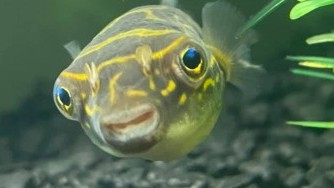Tunicates: The Most Difficult Invertebrate for Reef Tank?
- Oct 24, 2021
- Anshika Mishra
- 583 0 0

Tunicates are filter-feeding invertebrates. After having spent some time with them, you will find them incredibly interesting and beautiful. The downside, of course, is that they are probably one of the hardest things to keep alive in a reef aquarium.
What is a Tunic?
Tunicates, sometimes called sea squirts, are often misidentified in the coral hobby as sponges, but they are quite different in reality. Tunicates are a type of Cordate, specifically, Phylum Chordata. Now, if cordate sounds familiar, you would not be wrong because humans are Crodate; we share the same species.
Corals, for example, are Cnidarians, which are defined by having stinging cells. Chordates share similarities in their nervous system. Mainly the presence of a Notochord and a hollow dorsal nerve cord. Aside from that little bit of trivia, Tunicates come in a wide variety of colors and shapes.
Some of them are isolated individuals, while others are colonial. Many of them also have free-swimming stages, where they look like a tadpole.
They are called Tunicates because of their Tunic-like shape. The Tuni bag has two different siphons, the input, and the output siphon, they are exoskeleton, but they don't have to shed their exoskeleton periodically.
Why are Tunicates Difficult to Keep?
Not all Tunicates are challenging. Several of them are practically invasive species. However, the colorful ones you probably want to keep in your reef aquarium tend to be more challenging. Again, the root cause is the fact that they are filter feeders.
Almost everything that is a filter-feeder tends to be on the more challenging spectrum. They tend to be nearly impossible to keep because of the food requirements as there always has to be some food in the tank.
To put it into perspective, Tunicates, individually, can siphon up 100-gallon per day. So, they are seeking out quite a large volume of food. So, the other issue with feeding Tunicates is exactly what you should be feeding Tunicates.
It turns out that depending on which variety of Tunicates you have, they have different feeding preferences. Some consume large quantities of phytoplankton, while others consume larvae from other animals. Unfortunately, there is not much scientific literature on these either when it comes to what a specific species would be eating.
There might be something out there, and it doesn't hurt to look. But, for shortcuts, you can try making a slurry and broadcast feed the entire tank with it. Of course, the downside is that you are introducing a lot more nutrients into the water, so you have to pay closer attention to nitrates and phosphates that might build up.
Even doing it that way, you still might not be reaching the nutritional demand of the sea squirts. So, it is entirely possible that you broadcast feed a number of different foods, and the animals do not get enough and start to shrink and decay. As said before, they are not always easy to keep.
Are You up for the Challenge?
So, if you are ready to home Tunicates, be prepared to do a lot more research on the front end and do a lot of experimentation with different types of feeding and even change the way you filter your aquarium. For example, you are introducing bacteria into the water column periodically.
While some of the very brightly colored variants might be somewhat rare to the hobby, others come as hitchhikers, and they might not look quite too spectacular. However, they are pretty charming on their own. Also, they are much more likely to survive.






About author